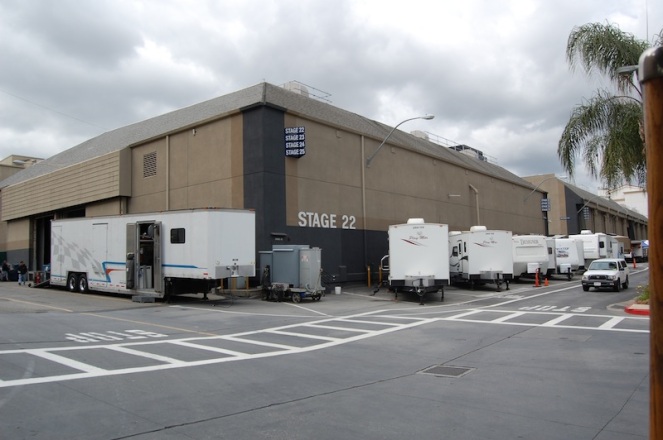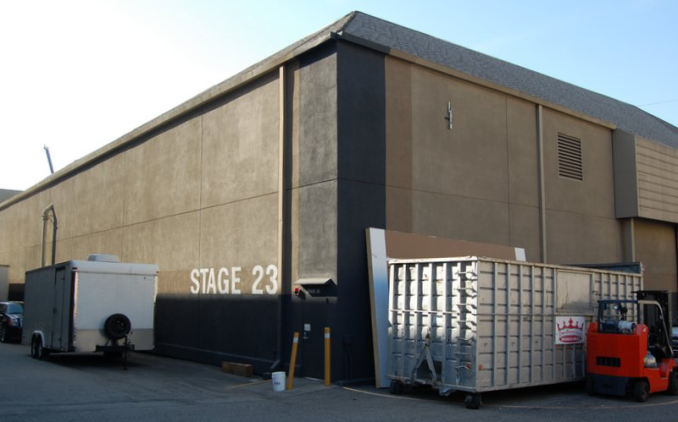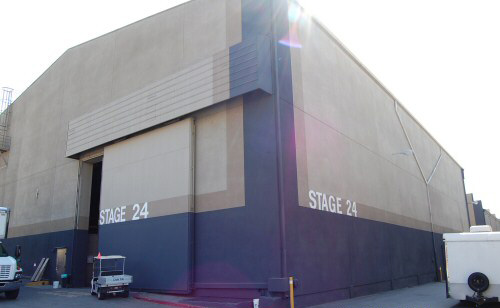It’s with a heavy heart that I write about some severely underreported news: Universal Studios in Hollywood has demolished four of their soundstages (Stages 22, 23, 24, and 25 to be exact), putting in motion a five-year plan to demolish their older stages in order to make room for theme park expansions and a newly renovated backlot. Inside Universal first broke the news two days ago, and while I was stunned at first, my feelings quickly turned into sadness and honestly a bit of anger once I began researching some of the history that these stages posessed. Below I’ve decided to point out some of the iconic films and television shows that were filmed on Stages 22-25, as well as what’s next for Universal Studios.
Stage 22

Stage 22, like most of the other stages that have been or will be torn down, was the birthplace of quite a few films that we know and love, including but not limited to: Abbott and Costello Meet Frankenstein (1947), To Catch A Thief (1954), Thoroughly Modern Millie (1967), Airport (1970), and The Sting (1973). Stage 22 was also the home of some television shows like Murder She Wrote (1984-1996), and CSI (2000-), as well as some more modern films like The Lost World: Jurassic Park (1997), the remake of Psycho (1998), Hulk (2003), and The Princess Diaries 2: Royal Engagement (2004).
Stage 23

The only two films shot at Stage 23 that would be considered Old Hollywood are Harvey (1950) and The Sting (1973), but this stage holds a great deal of recent history. The Rockford Files (1974-80), the legendary television series starring lovable classic film actor James Garner was filmed there (James Garner’s fan page on Facebook is actually how I learned about this upsetting demolition), as well as the original television series starring The Incredible Hulk (1978-1982), the original Jurassic Park (1993), The Cat and the Hat (2003), and the second and third installments of the wildly popular Pirates of the Carribean franchise, Dead Man’s Chest (2006) and At World’s End (2007).
Stage 24

As an Old Hollywood fan, the demolition of Stage 24 upsets me perhaps most of all. Two of Rock Hudson’s best films were filmed here, Pillow Talk (1959) and Man’s Favorite Sport? (1964). From season three onward, Lucille Ball’s show Here’s Lucy (1968-1974) also found a home at the lot.
Stage 25

Last but not least of the recently torn down soundstages, Stage 25 was where the Oscar-winning film Written on the Wind (1956) and the John Belushi classic The Blues Brothers (1980) were shot.
I wish I could say that Universal’s demolitions ended with these stages, but unfortunately there will be more to come. The studio plans to tear down Soundstages 29, 33-37, and 41-44, along with a rehearsal hall. Not all of these offer up any classic film nostalgia, but the some certainly do, like Stage 29, which housed the courthouse exterior of To Kill A Mockingbird (1962). Stage 33 also served as the filming location for the Debbie Reynolds hit Tammy and the Bachelor (1957), and Stage 44 was one of the many places where the legendary Hitchcock thriller The Birds (1963) was filmed.
As tempted as I am to try to do something about the future destruction, I really don’t believe that it would do much good this late in the game. I think all we can really do is offer a moment of silence for these locations that were home to some of the greatest stars and films of all time.


I haven’t heard anything at all about this and admit that the demolition itself isn’t surprising. I understand that they have to make room for newer spaces like any other business would. A redesigned backlot indicates there were some outdated elements that are hindering production. But I also understand and agree that by doing so, they’re tearing down history. But what is one to do because think about the history that goes even further back than the decades of the films mentioned. You also mentioned the temptation to try to stop the demolition, if you could, what do you suggest the studios be used for? Please don’t misunderstand me, I do believe that there needs to be preservation done for classic films. But it seems to be very difficult to get people in higher places, with the control or ability to make things happen, interested in preserving the physical history. For instance, I’m thinking of the late Debbie Reynolds’ collection of costumes/props that she tried to get into a proper museum and eventually had to get rid of most of it because the Academy didn’t want to help her. Since there was nowhere else for her to exhibit/maintain such an immense about of film history she had to auction most of it away. But even so, I believe that with a community of people who love classic films, there’s hope in keeping it alive…even if the studios no longer stand.
LikeLiked by 1 person
You really just put into words the reason why fighting back against the further demolitions would be pointless. Just like how the studio had the right to build the soundstages, they have the right to tear them down. I think most classic film fans would want to save these important buildings, and I was really just voicing my regret, but I think that if these soundstages really have so much history they could become a really interesting part of their Studio Tour, or they could have just renovated them and extended their usefulness.
Yes, as a Debbie Reynolds fan I know all about the struggle that she had with The Academy. I think the 2008 recession also attributed to her auctioning off some of her memorabilia, but I do find it ironic that The Academy is trying to open a museum and could have really used some of her pieces. Thank you so much for your thoughtful comment!
LikeLike
That’s really sad. They are literally taking away a physical link that still remained with the classic era. Such a shame.
LikeLike
Gosh, that just breaks my heart.
LikeLike